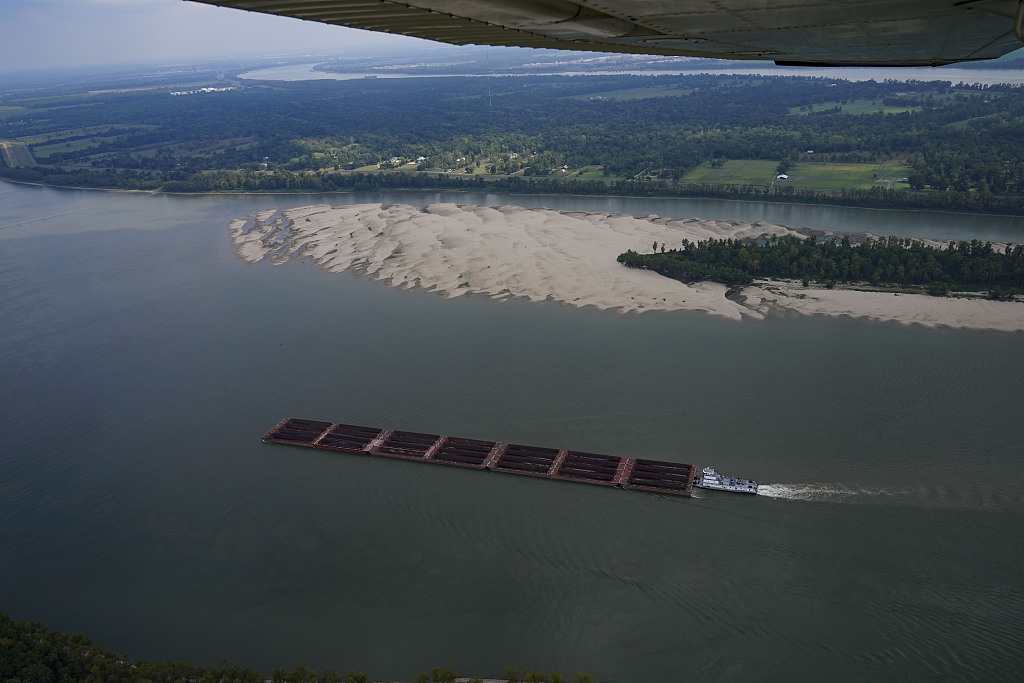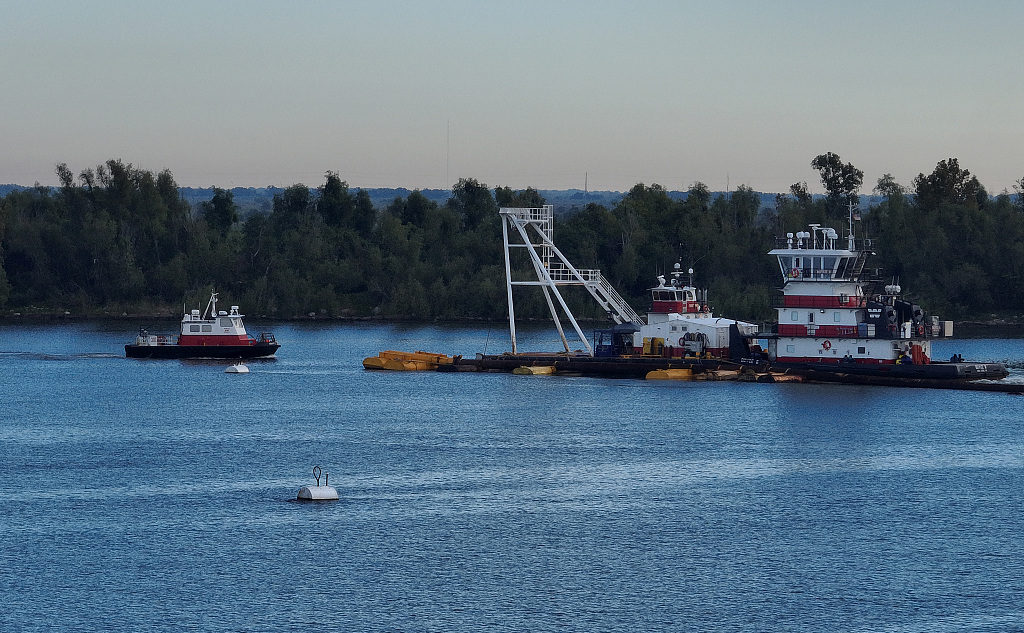Drought makes the Mississippi River in America almost unnavigable

[ad_1]
In the middle of the shrunken Mississippi River, a barge drags a giant metal-edged suction head along the riverbed to remove sediment from shipping lanes.
The crew of the dustpan dredge Hurley has been working around-the-clock for months to deepen the channels so boats and barges can pass through.
“We’ve worked almost nonstop since last fall, everywhere from New Orleans up to St. Louis” in Missouri, said the vessel’s captain Adrian Pirani, standing on the bridge.
For the second straight year, water levels in North America’s biggest river have dropped to record lows amid a lengthy drought. Locals say they’ve never seen it this bad.
From the Great Lakes in the north to the state of Louisiana in the south in the U.S., the majestic Mississippi is a shadow of its former self.

An aerial photo shows a tugboat pushing barges navigates around a sandbar during low water levels on the Mississippi River in Livingston Parish, Louisiana, U.S., September 14, 2023. /CFP
An aerial photo shows a tugboat pushing barges navigates around a sandbar during low water levels on the Mississippi River in Livingston Parish, Louisiana, U.S., September 14, 2023. /CFP
Plants have taken over newly exposed banks. Salt water is pushing in from the Gulf of Mexico. And farmers dependent on the river to ship their products have watched with frustration as traffic has seized up.
Authorities are doing what they can to ensure the river remains navigable, and that’s where the Hurley, operated by the US Army Corps of Engineers, comes in.
The dredge is currently digging at the same spot near Memphis, Tennessee for the third time. The dredge scrapes and sucks up mud from the river bottom and spews it onto the bank.
Pirani said he works long hours, first of all, “to make sure that commerce does not stop.”
But the job hits closer to home.
“I come from a farming family right here across the river. So it is kind of personal for me… I will do all I can do to keep the river going,” he told AFP.

In an aerial view, U.S. Army Corp of Engineers vessels are seen moving silt through pipes onto an underwater sill at the bottom of the Mississippi River to help slow the flow of saltwater intrusion in Belle Chasse, Louisiana, U.S., October 09, 2023. /CFP
In an aerial view, U.S. Army Corp of Engineers vessels are seen moving silt through pipes onto an underwater sill at the bottom of the Mississippi River to help slow the flow of saltwater intrusion in Belle Chasse, Louisiana, U.S., October 09, 2023. /CFP
For farmers in the vast U.S. Midwest, the Mississippi is an indispensable part of their transportation network.
But drought has left the river narrower and shallower, limiting shipping capabilities.
The bottleneck is ill-timed: early autumn is when farmers are working flat out to harvest soybeans and corn. With river shipping limited, they scramble to deal with massive buildup of stocks.
On the river in Osceola, Arkansas, Jeff Worsham manages an agricultural port. But two of its three docks are unusable due to low water.
A barge is tied up at the only accessible dock as soybeans are shot from a huge metal spout into its hold.
The vessel’s capacity equals that of roughly 80 trucks, but for now, it can only be filled to 50 or 60 percent capacity so the craft does not run the risk of getting stuck in the mud.
To ensure operations at all three docks next year, Worsham says, “we have made plans to do some dredging next year.”

A water depth gauge stands in the Mississippi River in New Orleans, Louisiana, U.S., October 12, 2023. /CFP
A water depth gauge stands in the Mississippi River in New Orleans, Louisiana, U.S., October 12, 2023. /CFP
In 50 years working around the Mississippi, Pete Ciaramitaro has seen the changes.
But what Ciaramitaro, director of river operations for the Southern Devall shipping company, has not seen is two consecutive autumns with so little water.
While droughts used to occur roughly once every 25 years, he said, “It looks like it’s going to be an annual thing to me. And that’s frightening.”
Ciaramitaro linked the drought explicitly to climate change.
“If somebody else has got a better explanation for it, I’d love to hear it,” he said. “But it’s the only one I can come up with – climate change.”
Source(s): AFP
[ad_2]
Source link

